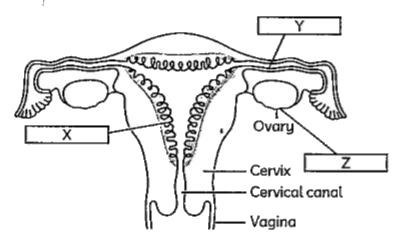For nuclide ZXA, which of the following changes snot take place in respective decay: a)Both (A) and (Z) decreases in α-decay b)Both (A) and (Z) do not change in γ-decay c)(A) does not change but (Z) decreases by one unitun positrondecay or k-electron capture d)Both (A) and (Z) increases in β-decay
The correct Answer is:99As and 158Nd
Step by step video, text & image solution for For nuclide ""_(Z)X""^(A), which of the following changes snot take place in respective decay: a)Both (A) and (Z) decreases in alpha-decay b)Both (A) and (Z) do not change in gamma-decay c)(A) does not change but (Z) decreases by one unitun positrondecay or k-electron capture d)Both (A) and (Z) increases in beta-decay by Physics experts to help you in doubts & scoring excellent marks in Class 12 exams.
Updated on:21/07/2023Topper's Solved these Questions
- THE NUCLEUSBOOK - RESNICK AND HALLIDAYCHAPTER - THE NUCLEUSEXERCISE - PROBLEMS
66 Videos
- THE NUCLEUSBOOK - RESNICK AND HALLIDAYCHAPTER - THE NUCLEUSEXERCISE - PRACTICE QUESTIONS (Single Correct Choice Type)
69 Videos
- THE NUCLEUSBOOK - RESNICK AND HALLIDAYCHAPTER - THE NUCLEUSEXERCISE - PRACTICE QUESTIONS(Integer Type)
7 Videos
- THE KINETIC THEORY OF GASESBOOK - RESNICK AND HALLIDAYCHAPTER - THE KINETIC THEORY OF GASESEXERCISE - PRACTICE QUESTIONS
72 Videos
- UNITS AND MEASUREMENT BOOK - RESNICK AND HALLIDAYCHAPTER - UNITS AND MEASUREMENT EXERCISE - PRACTICE QUESTIONS (MATRIX-MATCH)
11 Videos
Similar Questions
Knowledge Check
In the radioactive decay of ZXA, which of the following could be considered as incorrect statement?
Aα-decay involves the decrease of both A and Z by 2Bβ-dacay involves the increase of Z by one, A remaining constantCK-electron capture results in the decrease of Z by one with no change in A and emission of γ- raysDγ- ray emission is followed by the emission of α or β - particlesIn which of the following decays the atomic number decreases?
(i) α-decay (ii) β+-decay
(iii) β−-decay (iv) electron captureA(i),(ii),(iii)B(ii),(iii),(iv)C(i),(ii),(iv)DallA nuclide has mass number (A) and atomic number (Z). During a radioactive process if:
(A) both A and Z decrease, the process is called α-decay
(B)A remains unchanged and Z decreases by one, the process is called β+ or positron decay of K-electron capture
(C ) both A and Z remain unchanged the process is called γ-decay
(D)both A and Z increase, the process is called nuclear isomerism.
The correct answer is:A1,2 and 3B2,3, and 4C1,3, and 4D1,2, and 4
In both β−1 and β+ decay processes, the mass number of a nucleus remains same, whereas the atomic number Z increases by one in β− decay and decreases by one in β+ decay. Explain by giving reason.
View SolutionIf A={x,y,z} and B={a,b,c,d}. Then, which one of the following is not a relation from A to B ?
View SolutionLet A={x,y,z}andB={a,b,c,d} . Which one of the following is not a relation from A to B
View SolutionLet A = {x,y,z} and B = {a,b,c,d} Then, which one of the following is not a relation from A to B ?
View SolutionWhen a nucleus with atomic number Z and mass number A undergoes a radioactive decay process,
(i) Both Z and A will decrease, if the process is α decay
(ii) Z will decrease but A will not change, if the process is β+−decay
(iii) Z will increase but A will not change, if the process is β−decay
(iv) Z and a will remain uncharged, if the prices is γ decay
View Solution

